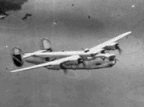Kull
Posts: 2625
Joined: 7/3/2007
From: El Paso, TX
Status: offline

|
After further research, let's take another look at AV Kamoi:
This ship has an interesting history, having been built in the US in 1922 as a large Fleet Oiler (10,000 ton capacity), and serving as such until her conversion to seaplane tender in 1934. Kamoi retained her fuel transport capability after the conversion, with the seaplanes all stored above decks in sheds and under canopies. Which is part of the reason why she has a truly unique shipside in AE (#1 on the attachment, zoomed up to 200% so you can better appreciate the details), which correlates best to a photo that I've been unable to date, but was probably taken soon after her conversion (#2).
The next major upgrade occurred in 1936-37, when Kamoi's stern was modified and fitted with German Hien-Mat recovery gear and crane (#3). This was a system that allowed ships to recover seaplanes while still underway, and was utilized by several European navies in this period. A dated photo from 1937 clearly shows the Hein Mat roller and rear crane (#4)
At this point we still have a ship profile which is pretty close to the one in AE, and the combinedfleet TROM doesn't indicate that any further modifications were made up until the time she was converted back to a Fleet Oiler in April 1944 (more on that below). However, a Russian web site has a page dedicated to Kamoi, with lots of information and good photographs. Here we learn that in "1939 - the ship spent in Yokosuka, undergoing repairs and modernization". That's not much to go on, but they also have a "Modernization" section, which includes a tab for 1939:
quote:
1939: The ship began to undergo a major modernization, after which it was planned to place 10 operational-suitable and 4 replacement seaplanes of new types on the ship. The new project for the composition of the air group was to include 2 Aichi E13A1 reconnaissance seaplanes (plus one spare) and 8 Mitsubishi F1M2 reconnaissance seaplanes (plus three spare). Only 14. However, just before the end of the modernization, the purpose of the ship was changed to a floating base of flying boats. Immediately after this, the sheds and rails were dismantled, and on the upper deck behind the forecastle, temporary, wooden living quarters for 200 people of technical composition were built. In addition, a fueling system for flying boats was installed on the ship. At the same time, artillery weapons were strengthened. On the bow and stern artillery sites, one 50-caliber 14-cm type 3 gun was installed . Anti-aircraft weapons included two former 8-cm type 3 anti-aircraft guns (on-site from the chimney) and six 12.7-mm Vickers anti-aircraft guns .
Steam boilers were replaced with 4 boilers type Kampon Ro-go .
After the completion of modernization, the ship's displacement in tests was 15381 tons.
I haven't seen that information anywhere else, but since the cited source is 3 books by Russian authors, it's possible this is just one of those areas where the translations haven't made it to the West. Well, that is a pretty significant change, and one would expect that Kamoi should look a lot different afterwards. And in fact they have a line drawing supposedly from 1941 which shows the new configuration without all the sheds (#5). I also found a very poor quality line drawing on JSTOR (#6) which shows all of these conversions, albeit their dates are incorrect. OK, so far so good, but where are the photos? What did Kamoi really look like after the 1939 conversion? Well fortunately there IS a photo, although we have to do some sleuthing in order to date it properly.
At the bottom of the Kamoi page is an aerial photo showing a large Japanese ship formation (#6). Although not dated, the photo is helpfully titled such that we know the names of all the ships: "From foreground to back, left to right: Kamoi , Haruna, Kongo, Mutsu, Nagato, Hiryu, Akagi, Jingei, and Chogei." Just as important, this is a fairly high res picture, which allows us to zoom in and get a pretty good look at Kamoi (#8), and sure enough, all the sheds are gone and she looks very much like the line drawings would suggest.
But when was it taken? Fortunately, the aircraft carrier Hiryu is in the upper left of the formation, and after comparing her profile with other pictures, there's no doubt that this is not Soryu (the port-side island is a dead giveaway). Which is important, because while all the other ships in the photo were active with the IJN since 1937 or earlier, Hiryu was not commissioned until mid-1939. Thus we can safely draw the conclusion that we are looking at Kamoi's final pre-war configuration.
That really matters because it means that Kamoi could no longer carry its own native air group and had to function primarily as a floating seaplane base. Additional confirmation comes from another aerial picture (also on the Russian site) which appears to be from roughly the same period (although probably not the same event since the ships are different and display pennants). In this case, Kamoi's stern is clearly visible and the Hein Mat system has been removed (#9), which is what one would expect in a ship that no longer carries it's own seaplane group.
So, what does all this mean for AE? Well, first let's consider the goal of this thread, which is to support the existing AE scenarios and database. That means Kamoi's functionality will not change in any way, although the shipside does need to be altered, plus the color should shift from a purplish hue to bluish-grey since we know the 1939 conversion took place in Yokosuka. In addition, the TROM tells us that Kamoi was damaged and went to Singapore for repairs in early 1944. There, she was also converted back to an AO since by this point in the war Japan was in far greater need of Tankers than Seaplane tenders. Without database changes, there's no point in modifying the shipside to look like an Oiler, but we can change the color to the late war greyish grey (although by then it's equally possible that she would have received the Merchant Green camo). Anyway, that means:
12/6/41 = Modified "bluish-grey" 0057.bmp file (#11) (#10 = Original shipside precedes #11 for comparison purposes)
5/1944 = Change to a "greyish-grey" (#12)
Those working on game mods should consider making the following changes to their database:
1) Give Kamoi a liquid carrying capacity of 10,000 tons. This reflects the historical reality of her conversion from AO to AV in 1934, in which her liquid storage holds remained untouched. In other words, she could serve as both an AV and a TK (the ability to fuel ships at sea would presumably have been lost during the AV conversion, as it would be unnecessary).
2) The AV modification in 1939 removes the ability to carry seaplanes, although she can still support them when disbanded in a dot or base hex.
3) Kamoi should have the ability to convert from AV to AO, preferably a conversion that comes with a tanker-like shipside (#13 = models showing AO version of Kamoi next to AO Notoro). And presumably the conversion should work both ways.

 Attachment (1) Attachment (1)
_____________________________
|
 Printable Version
Printable Version

































 New Messages
New Messages No New Messages
No New Messages Hot Topic w/ New Messages
Hot Topic w/ New Messages Hot Topic w/o New Messages
Hot Topic w/o New Messages Locked w/ New Messages
Locked w/ New Messages Locked w/o New Messages
Locked w/o New Messages Post New Thread
Post New Thread